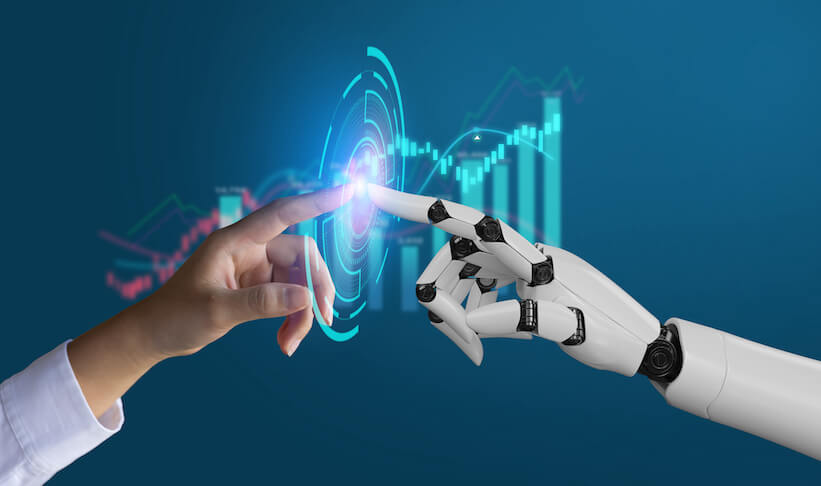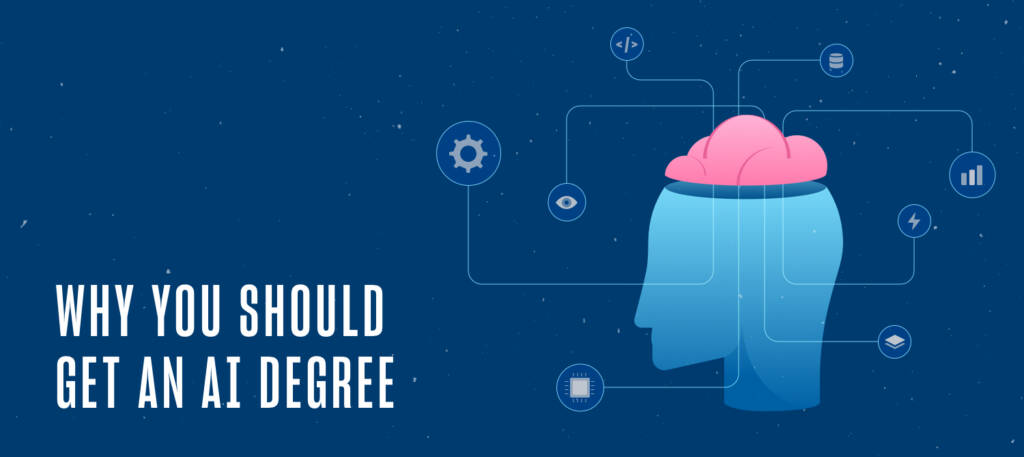Enrolling in a computer vision course can be a helpful way to break into a rapidly evolving field that is making a major impact on many industries today.
Computer vision is currently being used for a variety of applications, such as self-driving cars, facial recognition technology and medical image analysis. The broad implications of this technology are significant, as it has the potential to revolutionize the way we interact with the world and each other.
Read on to learn more about the basics of computer vision and explore the different types of applications it is being used for, as well as the challenges and opportunities it presents.
What Is Computer Vision?
At its core, computer vision is the ability of computers to understand and analyze visual content in the same way humans do. This includes tasks such as recognizing objects and faces, reading text and understanding the context of an image or video.
Computer vision is closely related to artificial intelligence (AI) and often uses AI techniques such as machine learning to analyze and understand visual data. Machine learning algorithms are used to “train” a computer to recognize patterns and features in visual data, such as edges, shapes and colors.
Once trained, the computer can use this knowledge to identify and classify objects in new images and videos. The accuracy of these classifications can be improved over time through further training and exposure to more data.
In addition to machine learning, computer vision may also use techniques such as deep learning, which involves training artificial neural networks on large amounts of data to recognize patterns and features in a way that is similar to how the human brain works.
History of Computer Vision
The history of computer vision dates back over 60 years, with early attempts to understand how the human brain processes visual information leading to the development of image-scanning technology in 1959. In the 1960s, artificial intelligence emerged as an academic field of study, and computers began transforming two-dimensional images into three-dimensional forms.
In the 1970s, optical character recognition technology was developed, allowing computers to recognize text printed in any font or typeface. This was followed by the development of intelligent character recognition, which could decipher hand-written text using neural networks. Real-world applications of these technologies include document and invoice processing, vehicle plate recognition, mobile payments and machine translation.
In the 1980s, neuroscientist David Marr established that vision works hierarchically and introduced algorithms for machines to detect edges, corners, curves and other basic shapes. At the same time, computer scientist Kunihiko Fukushima developed a network of cells called the Neocognitron that could recognize patterns, including convolutional layers in a neural network.
In the 1990s and 2000s, real-time face recognition apps appeared, and there was a standardization of visual data set tagging and annotating. In 2010, the ImageNet data set became available, containing millions of tagged images across a thousand object classes and providing a foundation for convolutional neural networks (CNNs) and deep learning models used today.
In 2012, the AlexNet model made a breakthrough in image recognition, reducing the error rate to just a few percent. These developments have paved the way for the widespread use of computer vision in a variety of applications today.
How Does Computer Vision Work?
The computer vision system consists of two main components: a sensory device, such as a camera, and an interpreting device, such as a computer. The sensory device captures visual data from the environment and the interpreting device processes this data to extract meaning.
Computer vision algorithms are based on the hypothesis that “our brains rely on patterns to decode individual objects.” Just as our brains process visual data by looking for patterns in the shapes, colors and textures of objects, computer vision algorithms process images by looking for patterns in the pixels that make up the image. These patterns can be used to identify and classify different objects in the image.
To analyze an image, a computer vision algorithm first converts the image into a set of numerical data that can be processed by the computer. This is typically done by dividing the image into a grid of small units called pixels and representing each pixel with a set of numerical values that describe its color and brightness. These values can be used to create a digital representation of the image that can be analyzed by the computer.
Once the image has been converted into numerical data, the computer vision algorithm can begin to analyze it. This generally involves using techniques from machine learning and artificial intelligence to recognize patterns in the data and make decisions based on those patterns. For example, an algorithm might analyze the pixel values in an image to identify the edges of objects or to recognize specific patterns or textures that are characteristic of certain types of objects.
Overall, the goal of computer vision is to enable computers to analyze and understand visual data in much the same way that human brains and eyes do, and to use this understanding to make intelligent decisions based on that data.
Computer Vision at Work
Computer vision has provided numerous technological benefits in various industries and applications.
One example is IBM’s use of computer vision to create “My Moments” for the 2018 Masters golf tournament. This application used computer vision to analyze live video footage of the tournament and identify key moments, such as successful shots or notable events. These moments were then curated and delivered to fans as personalized highlight reels, allowing them to easily keep track of the tournament and stay engaged with the event.
Disney theme parks have also made use of computer vision and AI predictive technology to improve their operations. The technology works with high-tech sensors to help keep attractions running smoothly, with minimal disruptions. For example, if an attraction is experiencing technical issues, the system can predict the problem and automatically dispatch maintenance staff to fix it, helping to keep the attraction running smoothly and preventing disruptions for guests.
Google Translate is another example of the use of computer vision in technology. This application uses a smartphone camera and computer vision algorithms to analyze and translate text in images, such as signs or documents in foreign languages. This allows users to easily translate text on the go, making it easier to communicate and navigate in unfamiliar environments.
Finally, IBM and Verizon have been working together to help automotive companies identify vehicle defects before they depart the factory. Using computer vision and other advanced technologies, they are developing systems that can analyze the quality of vehicle components and identify defects in real time, allowing companies to catch and fix problems before they become larger issues. This can help improve the quality and safety of vehicles, as well as reduce production costs by catching problems early on in the manufacturing process.
Examples of Computer Vision
Computer vision has a wide range of capabilities and applications in various industries. Here are some examples of computer vision capabilities, along with brief explanations of each:
Optical character recognition (OCR): the ability to recognize and extract text from images or scanned documents
Machine inspection: the use of computer vision to inspect and evaluate the quality or condition of various components or products
Retail: the use of computer vision in automated checkout systems and other retail applications, such as inventory management and customer tracking
3D model building: the use of computer vision to analyze multiple images of an object or environment and construct a 3D model of it
Medical imaging: the use of computer vision to analyze medical images, such as X-rays or CT scans, to aid in the diagnosis and treatment of patients
Automotive safety: the use of computer vision in driver assistance systems and autonomous vehicles to detect and respond to obstacles and other hazards on the road
Match move: the use of computer vision to align and merge CGI elements with live-action footage in movies and other visual effects
Motion capture: the use of computer vision to capture and analyze the movement of actors or other objects, typically for use in animation or virtual reality applications
Surveillance: the use of computer vision to analyze video footage for security and monitoring purposes
Fingerprint recognition and biometrics: the use of computer vision to analyze and recognize unique physical characteristics, such as fingerprints, for identity verification and other applications
The Challenges of Computer Vision
Computer vision is a complex field that involves many challenges and difficulties. Some of these challenges include:
- Data limitations
Computer vision requires large amounts of data to train and test algorithms. This can be problematic in situations where data is limited or sensitive, and may not be suitable for processing in the cloud. Additionally, scaling up data processing can be expensive and may be constrained by hardware and other resources.
- Learning rate
Another challenge in computer vision is the time and resources required to train algorithms. While error rates have decreased over time, they still occur, and it takes time for the computer to be trained to recognize and classify objects and patterns in images. This process typically involves providing sets of labeled images and comparing them to the predicted output label or recognition measurements and then modifying the algorithm to correct any errors.
- Hardware requirements
Computer vision algorithms are computationally demanding, requiring fast processing and optimized memory architecture for quicker memory access. Properly configured hardware systems and software algorithms are also necessary to ensure that image-processing applications can run smoothly and efficiently.
- Inherent complexity in the visual world
In the real world, subjects may be seen from various orientations and in myriad lighting conditions, and there are an infinite number of possible scenes in a true vision system. This inherent complexity makes it difficult to build a general-purpose “seeing machine” that can handle all possible visual scenarios.
Overall, these challenges highlight the fact that computer vision is a difficult and complex field, and that there is still much work to be done in order to build machines that can see and understand the world in the same way humans do.
Boost Your Knowledge with a Computer Vision Course
Computer vision is a rapidly growing field that has the potential to positively impact many aspects of our daily lives. While there are still many challenges and limitations to overcome, computer vision technology has made significant strides in recent years, and we can expect to see even more exciting developments in the future.
Are you interested in taking part in this exciting field? Download our E-book, “8 Questions to Ask Before Selecting an Applied Artificial Intelligence Master’s Degree Program” to get started.



